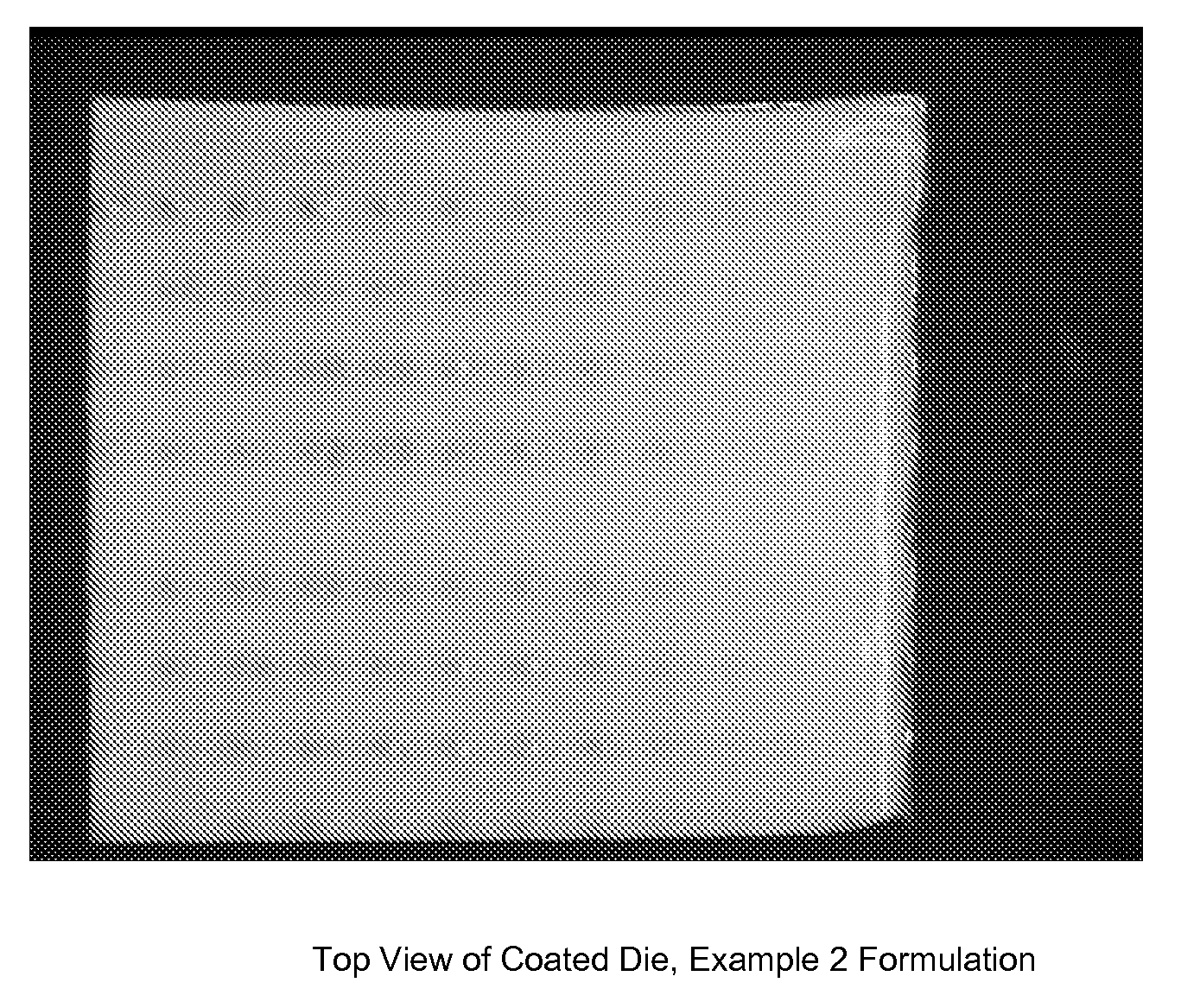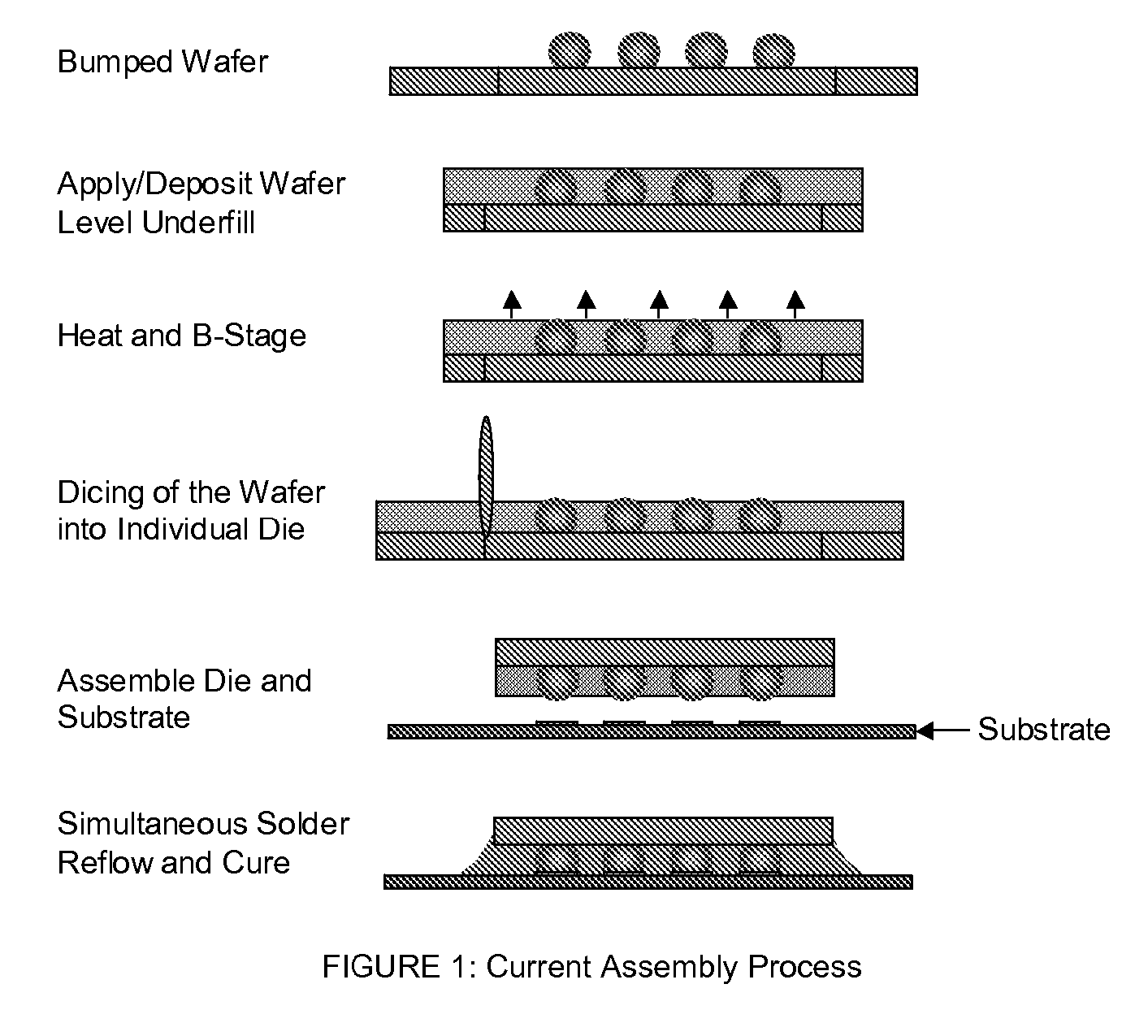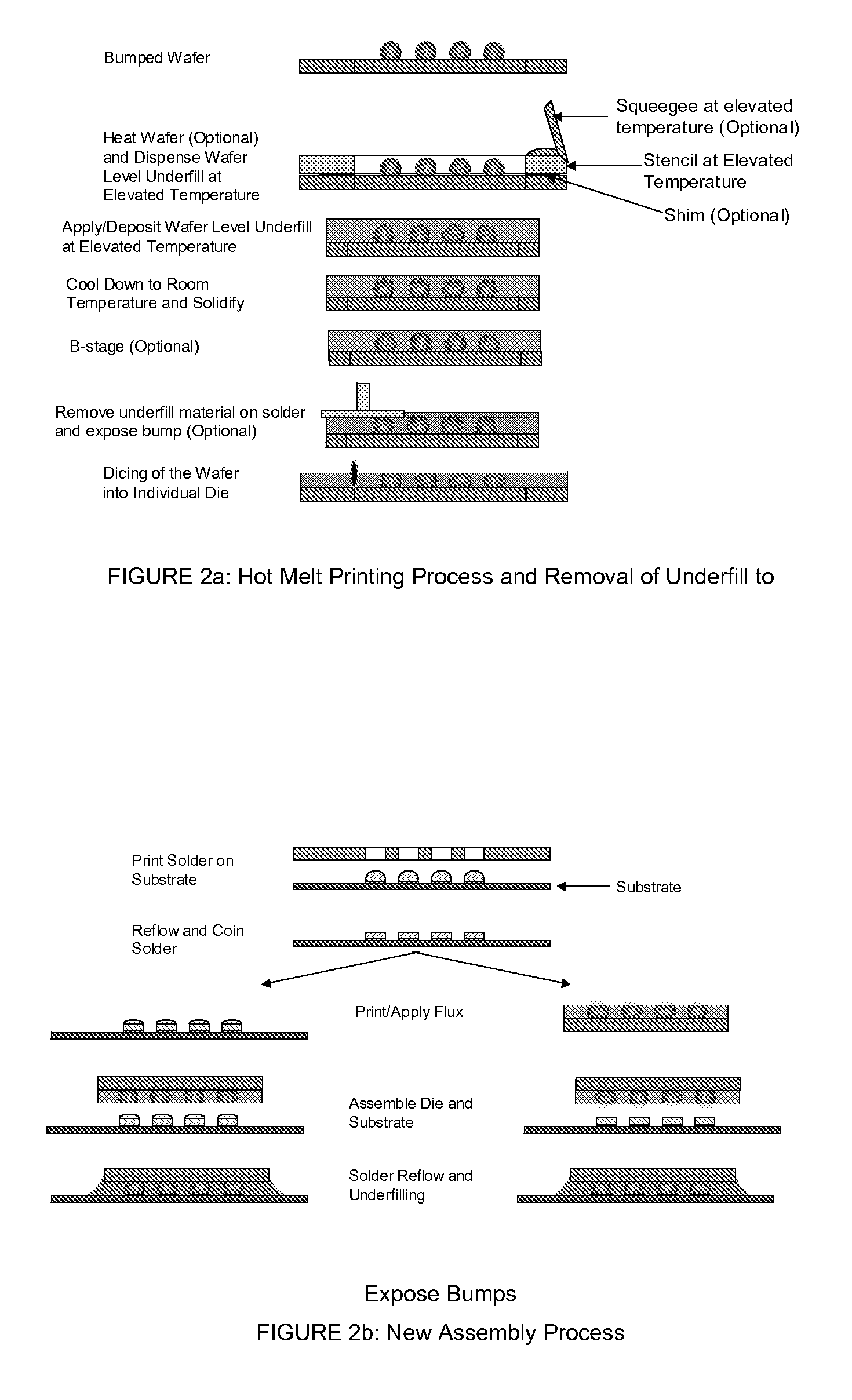Hot-Melt Underfill Composition and Methos of Application
a technology of solvent-free underfill and composition, which is applied in the direction of basic electric elements, electrical apparatus, and semiconductor devices, can solve the problems of filler interference with soldering, time-consuming capillary and no flow underfill methods, and no flow assembly, etc., to achieve reduced cycle time, increase manufacturing efficiency, and high solder bump configuration
- Summary
- Abstract
- Description
- Claims
- Application Information
AI Technical Summary
Benefits of technology
Problems solved by technology
Method used
Image
Examples
example 1
[0073] The EXAMPLE 1 formulation was prepared using standard adhesive mixing techniques known to those skilled in the art, with the following composition:
Epon 1001F Bisphenol A / Epichlorohydrin Epoxy47.6 wt %Amorphous Silica Filler47.6 wt %Polysebacic Polyanhydride4.76 wt %
example 2
[0074] The EXAMPLE 2 formulation was prepared using standard adhesive mixing techniques known to those skilled in the art, with the following composition:
Epiclon HP-7200H Epoxy Resin41.7wt %Amorphous Silica Filler41.7wt %Dodecanedioic Acid Flux10.0wt %Epiclon 830S Bisphenol F Epoxy4.17wt %Hypox RM20 Rubber Modified Epoxy1.9wt %HRJ 1166 Novolac Phenol Resin0.48wt %Amino Aromatic Amide0.11wt %
[0075] Each composition was separately printed onto a silicon wafer that had 450 micron high bumps at 800 micron pitch. An aluminum stencil that was slightly thicker than the bumped wafer was used for printing, so that the material would fully cover the bumps. This ensured that the bumps were not damaged by the squeegee during printing. The wafer was placed inside the stencil on a hot plate. An excess amount of solid underfill was placed on the hot plate, at one end of the stencil and wafer. The stencil, wafer, and solid underfill were heated to 130° C., at which point the underfill was molten....
PUM
 Login to View More
Login to View More Abstract
Description
Claims
Application Information
 Login to View More
Login to View More - R&D
- Intellectual Property
- Life Sciences
- Materials
- Tech Scout
- Unparalleled Data Quality
- Higher Quality Content
- 60% Fewer Hallucinations
Browse by: Latest US Patents, China's latest patents, Technical Efficacy Thesaurus, Application Domain, Technology Topic, Popular Technical Reports.
© 2025 PatSnap. All rights reserved.Legal|Privacy policy|Modern Slavery Act Transparency Statement|Sitemap|About US| Contact US: help@patsnap.com



